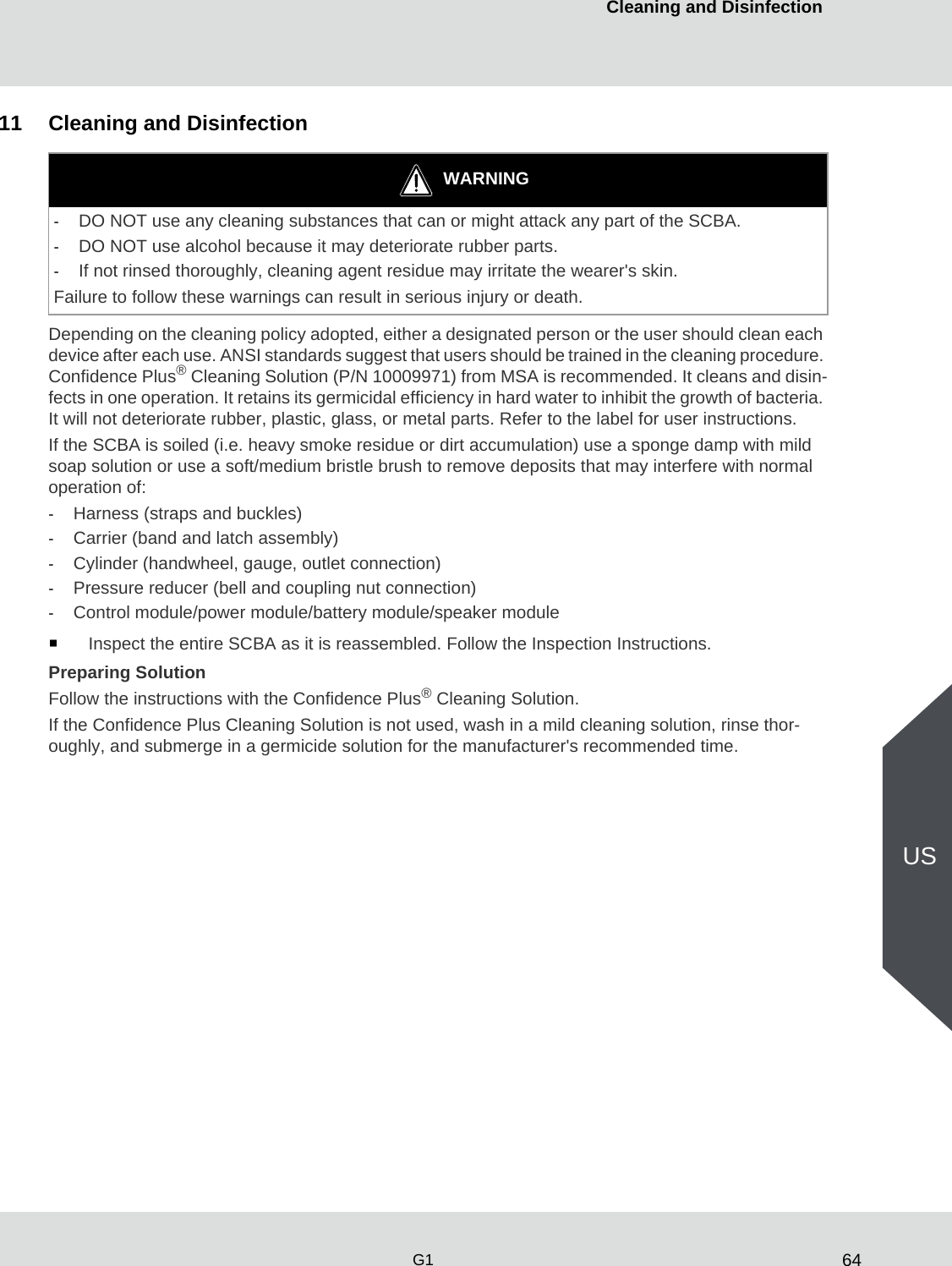Msa Standards Manual For End-users
MSA Standards Manual for end users. MSA licensed end users (wholesalers, retailers, food service and supermarkets) must adhere to the MSA Standards Manual for end users to ensure the integrity of the MSA program is upheld. Customer satisfaction. MSA product must meet consumer set standards as described on the retail label. Using Measurement Systems Analysis (MSA). We frequently do not realize how our decisions depend on the results of a measurement system. We also do not adequately understand the consequences of incorrect results of a measurement system. Imagine that a doctor prescribes medicines to reduce blood pressure (BP) when it is actually normal! MSA COMMUNITY STANDARDS The standard for MSA applicants and participants who live independently in the community is the total of the client's MSA assistance standard and any ongoing special needs allowances. See 0023 (Special Needs Payments). If a married couple lives together and both partners are applying and have an MSA basis of eligibility.
MSA G1 Breathing Apparatus designed for your safety comfort. The G1 SCBA offers integrated and enhanced solutions to exceed your needs today as well as years into the future. MSA's long-standing commitment to the fire service industry began nearly 100 years ago.
A measurement systems analysis (MSA) is a thorough assessment of a measurement process,and typically includes a specially designed experiment that seeks to identify the components of variation in that measurement process.
Just as processes that produce a product may vary,the process of obtaining measurements and data may also have variation and produce incorrect results.A measurement systems analysis evaluates the test method, measuring instruments, and the entire process of obtaining measurements to ensure the integrity of data used for analysis (usually quality analysis) and to understand the implications of measurement error for decisions made about a product or process.MSA is an important element of Six Sigma methodology and of other quality management systems.
MSA analyzes the collection of equipment, operations, procedures, software and personnel that affects the assignment of a number to a measurement characteristic.
 Aspect Ratio is set to original and Just Scan is turned On but I'm still seeing that the picture is cut off.
Aspect Ratio is set to original and Just Scan is turned On but I'm still seeing that the picture is cut off.
A measurement systems analysis considers the following:
- Selecting the correct measurement and approach
- Assessing the measuring device
- Assessing procedures and operators
- Assessing any measurement interactions
- Calculating the measurement uncertainty of individual measurement devices and/or measurement systems
Common tools and techniques of measurement systems analysis include: calibration studies, fixed effect ANOVA, components of variance, attribute gage study, gage R&R, ANOVA gage R&R, and destructive testing analysis.The tool selected is usually determined by characteristics of the measurement system itself.An introduction to MSA can be found in chapter 8 of Doug Montgomery's Quality Control book.[1]These tools and techniques are also described in the books by Donald Wheeler[2]and Kim Niles.[3]Advanced procedures for designing MSA studies can be found in Burdick et. al.[4]
Factors affecting a measurement process[edit]
Factors might include:
- Equipment: measuring instrument, calibration, fixturing.
- People: operators, training, education, skill, care.
- Process: test method, specification.
- Samples: materials, items to be tested (sometimes called 'parts'), sampling plan, sample preparation.
- Environment: temperature, humidity, conditioning, pre-conditioning.
- Management: training programs, metrology system, support of people, support of quality management system.
These can be plotted in a 'fishbone' Ishikawa diagram to help identify potential sources of measurement variation.
Goals[edit]
The goals of a MSA are:
- Quantification of measurement uncertainty, including the accuracy/bias, precision including repeatability and reproducibility, the stability and linearity of these quantities over time and across the intended range of use of the measurement process.
- Development of improvement plans, when needed.
- Decision about whether a measurement process is adequate for a specific engineering/manufacturing application.
ASTM Procedures[edit]
The ASTM has several procedures for evaluating measurement systems and test methods, including:
- ASTM E2782 - Standard Guide for Measurement Systems Analysis
- ASTM D4356 - Standard Practice for Establishing Consistent Test Method Tolerances
- ASTM E691 - Standard Practice for Conducting an Interlaboratory Study to Determine the Precision of a Test Method
- ASTM E1169 - Standard Guide for Conducting Ruggedness Tests
- ASTM E1488 - Standard Guide for Statistical Procedures to Use in Developing and Applying Test Methods

ASME Procedures[edit]
The American Society of Mechanical Engineers (ASME) has several procedures and reports targeted at task-specific uncertainty budgeting and methods for utilizing those uncertainty estimates when evaluating the measurand for compliance to specification. They are:
- B89.7.3.1 - 2001 Guidelines for Decision Rules: Considering Measurement Uncertainty Determining Conformance to Specifications
- B89.7.3.2 - 2007 Guidelines for the Evaluation of Dimensional Measurement Uncertainty (Technical Report)
- B89.7.3.3 - 2002 Guidelines for Assessing the Reliability of Dimensional Measurement Uncertainty Statements
AIAG Procedures[edit]
The Automotive Industry Action Group (AIAG),a non-profit association of automotive companies,has documented a recommended measurement systems analysis procedure in their MSA manual.[5]This book is part of a series of inter-related manuals the AIAG controls and publishes,including:
- The measurement systems analysis manual
- The failure mode and effects analysis (FMEA) and Control Plan manual
- The statistical process control (SPC) manual
- The production part approval process (PPAP) manual
Note that the AIAG's website has a list of 'errata sheets' for its publications.
Msa Qualification Standards
See also[edit]
- Measurement uncertainty
References[edit]
Msa User Manual
- ^Montgomery, Douglas C. (2013). Introduction to Statistical Quality Control (7th ed.). John Wiley and Sons. ISBN978-1-118-14681-1.
- ^Wheeler, Donald (2006). EMP III: Evaluating the Measurement Process & Using Imperfect Data. SPC Press. ISBN978-0-945320-67-8.
- ^Niles, Kim (2002). Characterizing the Measurement Process in iSixSigma Insights Newsletter, Vol. 3, #42. ISSN1530-7603.
- ^Burdick, Richard K.; Borror, Connie M.; Montgomery, Douglas C. (2005). Design and Analysis of Gauge R&R Studies: Making Decisions with Confidence Intervals in Random and Mixed ANOVA Models. SIAM. ISBN978-0-898715-88-0.
- ^AIAG (2010). Measurement Systems Analysis, MSA (4th ed.). Automotive Industry Action Group. ISBN978-1-60-534211-5.